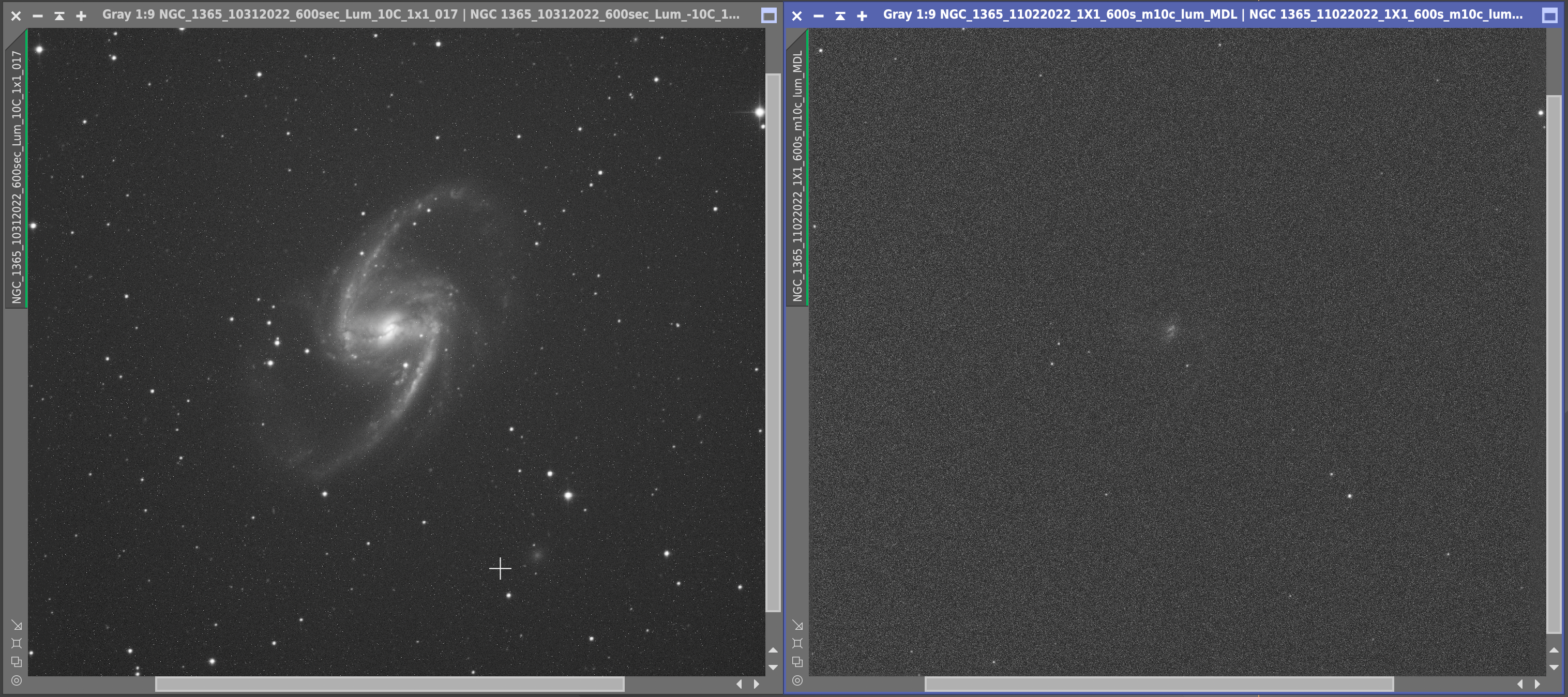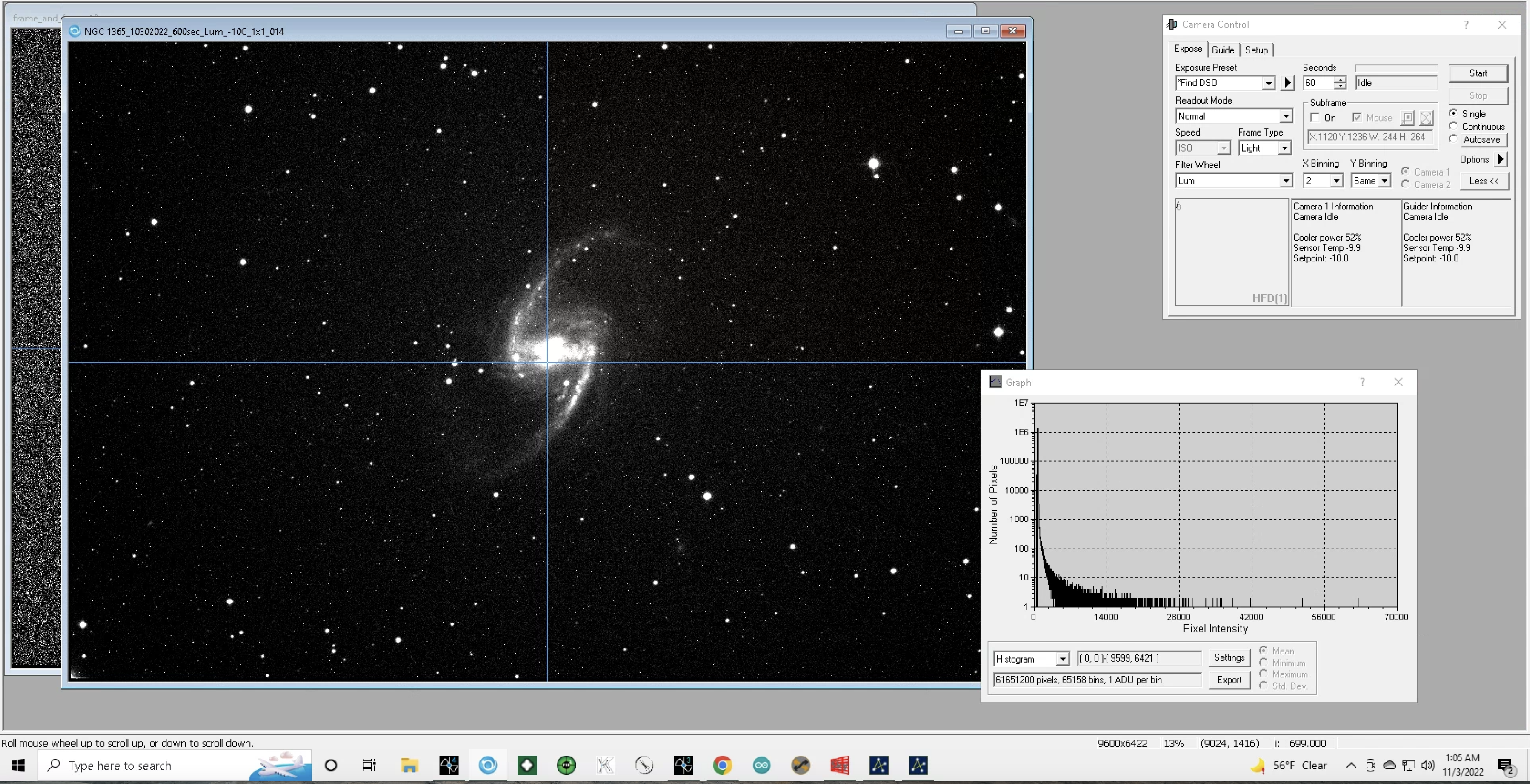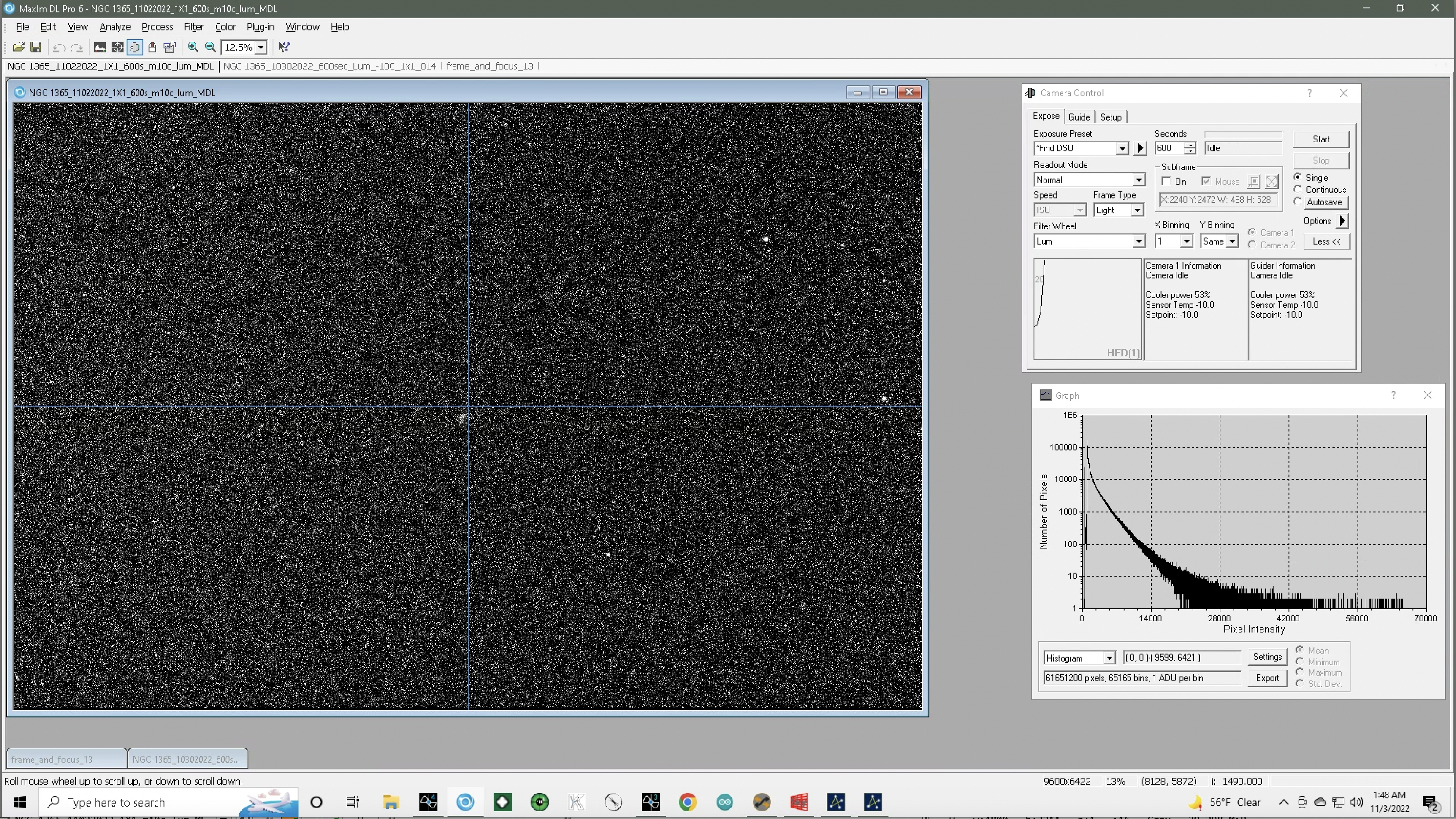A couple of months ago my ATIK Horizon 2 guide camera started acting "wonky." The background level suddenly went way up. I mitigated it by subtracting a dark frame but it has screwed up the SNR of my guide signal. Fortunately it still works well enough to guide. Fortunately, I already have a replacement camera sitting at the observatory ready to be installed. This is the second failure of a Horizon 2 in less than a year.
Just last night my main imaging camera, a QHY600PH M, went "wonky" in a different way. It almost looks as if the 16 bit image data has been bit-shifted left by ~ 4-5 bits--but that's not what is happening. We fixed it last night by pulling and reconnecting cables but I'm out of luck tonight. I can't get it to work correctly. Here is a comparison of two images of the same object through a LUM filter at the same cooling temperature with the same exposure before and after the "glitch".

Here are histogram plots of both images. First, before:

And second, after the failure:

There is no dew and the sky is clear. This sure looks like a camera problem. As I said, we fixed it last night by pulling cables and reconnecting them. I've also tried a brand new USB3 cable with no improvement. We haven't yet measured the voltage at the camera so that might be a problem. This particular data was taken using MDL but I get the exact same results using SGP (my normal imaging program).
My question: Has anyone else seen this problem and is there a simple fix? I want to exhaust all possibilities before jumping on a plane to go to Chile with a replacement camera. With two dead cameras, I'm already mentally packing my bags.
John
Just last night my main imaging camera, a QHY600PH M, went "wonky" in a different way. It almost looks as if the 16 bit image data has been bit-shifted left by ~ 4-5 bits--but that's not what is happening. We fixed it last night by pulling and reconnecting cables but I'm out of luck tonight. I can't get it to work correctly. Here is a comparison of two images of the same object through a LUM filter at the same cooling temperature with the same exposure before and after the "glitch".

Here are histogram plots of both images. First, before:

And second, after the failure:

There is no dew and the sky is clear. This sure looks like a camera problem. As I said, we fixed it last night by pulling cables and reconnecting them. I've also tried a brand new USB3 cable with no improvement. We haven't yet measured the voltage at the camera so that might be a problem. This particular data was taken using MDL but I get the exact same results using SGP (my normal imaging program).
My question: Has anyone else seen this problem and is there a simple fix? I want to exhaust all possibilities before jumping on a plane to go to Chile with a replacement camera. With two dead cameras, I'm already mentally packing my bags.
John